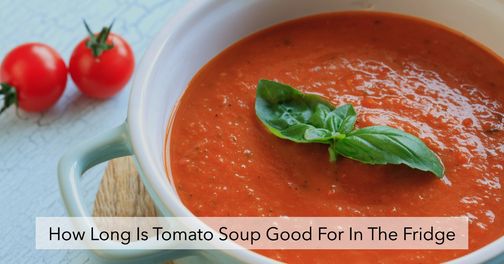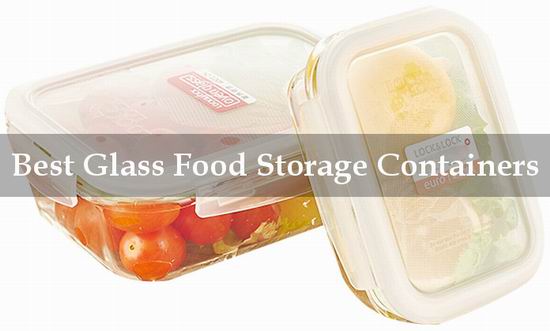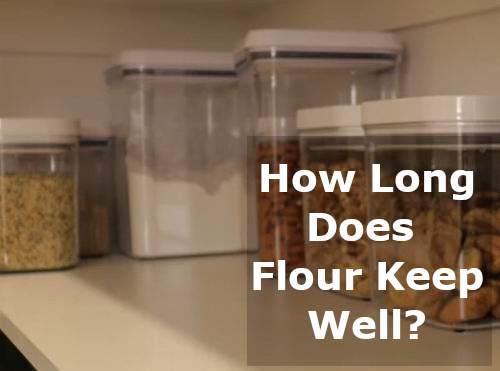 Cooking requires both culinary skill and the ability to safely store meals for later consumption. Shelf life is one of the primary concerns when it comes to cooking as this determines both taste and safety of meals.
Cooking requires both culinary skill and the ability to safely store meals for later consumption. Shelf life is one of the primary concerns when it comes to cooking as this determines both taste and safety of meals.
Tomato soup is one of the most beloved menu items and one of the most sought-after products, yet its shelf life can often be difficult to predict and determine. From both an environmental and flavor retention perspective, this question needs to be carefully addressed in order to guarantee maximum taste retention and flavor retention.
This article details the optimal conditions under which tomato soup may be stored in a freezer without jeopardizing health or altering taste while outlining any associated storage standards or potential issues that could arise if these were violated.
How should I store bright tomato soup in my refrigerator?
Tomato soup made ahead of time and frozen can make an enticing meal that you can enjoy any time, yet improper storage techniques may quickly make it inedible and inedible. Here are some helpful hints for keeping tomato soup sweet and refreshing for years.
Select an airtight container. A glass or plastic jar with an airtight lid is optimal for storing tomato soup to minimize air exposure while prolonging its freshness.
Store Tomato Soup in the Freezer
- Shelf Life. Fresh tomato soup may be stored in the freezer for 2-3 days before needing to be consumed.
- Frozen tomato soup can last three months in your freezer.
- Thawed and reheated tomato soup should be consumed within 24 hours after its creation.
- Be wary when storing soup in special packaging. If your store-bought tomato soup comes packaged in special containers like cardboard or rolls, be sure that they remain separate as these do not provide enough protection from airflow. C.
Overheating tomato soup could lead to its spoilage; setting your stove at +70 degrees Celsius should ensure the meat remains fresh for optimal enjoyment.
Store tomato soup in an open container
The shelf life of tomato soup stored in open containers stored in the freezer depends on its storage conditions and characteristics, with fresh ingredients thoroughly chilled before being stored unopened in an unopened, closed container being ideal. When properly frozen for two or more days this type of product should remain safe for years.
However, when making tomato soup using frozen or canned ingredients that have an expiration date attached to them, its shelf life can quickly diminish and should be consumed within one or two days even if stored in sealed packages in the freezer.
For optimal tomato soup storage, it is wise to store it in airtight plastic or glass jars and allow it to come up to room temperature before placing it in the freezer.
If tomato soup has already been heated and stored at either room temperature or frozen temperatures for any length of time that exceeds several hours or days, it should be consumed quickly before it becomes unsafe to do so. When possible, expired products should be discarded to protect one’s health.
Keep your tomato soup stored in an airtight container
One of the easiest and longest-term methods of saving tomato soup is placing it in an airtight container and freezing at temperatures between 0-5 degrees Celsius, to keep its taste as fresh and flavorful over time. This ensures it will always taste fresh.
Soup should be stored at an ideal temperature before being frozen to maximize its chances of staying at that ideal state and minimize freezer load. Placing soup broth near direct sunlight or heat sources may increase bacteria growth and be harmful to health, creating potential health hazards.
Soup containers should be stored in the freezer and periodically cleaned and sanitized to maintain food safety and proper storage practices. If there are leftovers that won’t be eaten soon after defrosting occurs, safe storage should also be remembered when defrosting occurs.
Tips for Storing Tomato Soup in Closed Containers
Chilling soup before storage helps maintain optimal temperatures in freezers and maintain fresh flavors while protecting taste, aroma and bacteria growth. Storing at temperatures between 0-5 degrees Celsius ensures optimal temperatures while decreasing risk of toxicity from bacteria.
Avoiding direct sunlight and heat helps avoid unwanted trace breakages and maintain product quality, while storing products in an environmentally controlled freezer prevents microbial growth.
How long can I store tomato soup in my freezer?
One of the more frequently asked cooking questions involves how long food should be stored in the freezer, specifically tomato soup. Proper storage will ensure its vitality and quality are preserved for future enjoyment!
Professional advice advises storing tomato soup in an airtight container in the freezer for three to four days in order to ensure its safe consumption; but keep in mind that its taste and quality may fluctuate daily.
For optimal tomato soup storage, the freezer is the way to go. Once frozen, most varieties can last three or four months before needing defrosting and heating prior to consumption.
Store vegetable soup in an airtight container in the freezer for three or four days.
- Make tomato soup ahead and store in the freezer.
- Overheating tomato soup will reduce both its texture and taste.
Before eating your tomato soup, always check its freshness; if it smells or has an unusual smell or flavor, don’t take a chance and throw it away instantly.
Timely Tomato Soup
Fresh tomato soup is an easy and delectable treat that can be prepared quickly. But after it has been frozen after creation, many wonder how long its fresh flavor will remain fresh after being stored in the freezer.
Shelf life of vibrant tomato soup depends on its storage conditions. When heated and stored at room temperature for two or three hours after being cooked, its quality should deteriorate beyond salvageability within two to three hours, at which point its usability ceases and cannot be salvaged anymore.
Refrigerating or freezing tomato soup for 2-3 days at 2-6 degrees Celsius extends its shelf life significantly. Refrigerating tomato soup will preserve both its sweetness and aroma. A portioned approach is best to ensure fresh flavor is preserved over time. If tomato soup must be stored for an extended period, proper preservation methods can extend its shelf life by up to three or four months.
Strong tomato soups should be refrigerated within two to three days in the freezer to reduce risk of intestinal infection transfer via food. In order to preserve both its sweetness and healthiness, make sure it remains in your pantry!
Store frozen tomato soup according to your region’s storage recommendations.
Tomato soup is one of the world’s favorite meals and can be made using any variety of tomato available to you. Premade tomato soup can easily be frozen for unexpected guests or quick lunchtime meals. It can last in your freezer for six months without losing quality or flavor if stored airtight, at temperatures less than 18degC.
Once your tomato soup has partially defrosted, remove from the freezer and allow it to sit out at room temperature for several hours before refrigerating it for consumption. Remember: defrosting at room temperature could result in bacteria spreading rapidly and degrading its quality!
Once defrosted, immediately heat and don’t refreeze it – this will preserve all its vitamins, minerals, temperature and combination properties.
Store tomato soup made with soured milk products properly to preserve its flavour and nutrients. Here’s information for doing just that.
Tomato soup made with sour milk has quickly become one of the most loved comfort meals, yet storage may prove challenging due to sour milk products’ tendency to spoil quickly.
Store tomato soup made with soured world dairy products by cooling it to room temperature prior to placing in the freezer. Soup should only remain frozen for up to two days as it tends to go bad quickly. For optimal tomato soup with sour milk storage in the freezer, it’s advisable to place it in an airtight container such as glasses or plastic container with lids.
What steps can be taken if my tomato soup becomes rancid?
Even with all due care taken to preserve it, tomato soup may still go off in the freezer and using it as a preventive health measure may not be wise.
If it smells foul and exhibits strange flavors or textures, this could be an indicator that it has gone bad and should be avoided even if its appearance remains unchanged. If this occurs, do not consume.
To prevent similar issues in the future, be mindful of how long tomato soup stays frozen before being stored properly, and always comply with local rules when creating and storing them.
Tomato soup is one of the world’s favorite meals, yet just like any food item, it may eventually spoil.
How can you tell if your tomato soup has gone off?
Color Change – Soup that has turned dark or brown is likely spoilt, while colored crumbs could indicate its spoilage as well.
Unusual Aroma – When tomato soup has an unusual or unpleasant odor, this could be an indicator of spoilage and it is best to throw the dish away rather than risk taking care to ensure its continued care.
Taste Issues – Spoilage in tomato soup can produce an overly tart and/or bitter taste that makes the product inedible, rendering it unacceptable for consumption. In such instances, discontinue use immediately.
Moldy soup must be discarded immediately in order to prevent intestinal infection.
How should I store quality tomato soup in the refrigerator?
Chill your soup before storing: to protect the flavor profile and extend its shelf life without altering its aroma, store tomato soup in its original state – chilled temperatures ensure longer storage life without altering its flavour profile.
Store soup in sealed containers: Doing this will keep it colder longer, preserve its flavor more effectively, and save freezer space in addition to saving energy costs.
Maintain Soup in Smaller Portions: If you find that you aren’t going through all your tomato soup right away, divide some up into individual ice cube trays in the freezer and thaw out as necessary if only small portions are desired – this way you don’t waste energy heating it all back up again when only partial servings are needed!
Adopt these guidelines, and your soup will surely retain its signature taste for years of enjoyment.
Refrigerating Tomato Soup
Below are additional suggestions on how to do so efficiently:
Plastic storage containers may seem convenient when it comes to freezing tomato soup, but their plastic material could compromise its flavor. If you use this method of storage, just be sure it contains only food-grade chemicals that won’t pose health risks by shifting into exercise instead.
Glass jars are the ideal solution for freezing tomato soup, helping preserve its quality and taste while being free from harmful substances that could alter it. Just make sure your container closes securely so it won’t change its aroma or flavor!
- Store items in plastic bags or trays to make for the easiest storage method in the freezer.
- Before freezing, be certain the soup has fully cooled down.
- Be sure that the soup container leaves space for expansion when freezing it.
- Label your container with its initial freezing date so that you can gauge its progress over time.
Before defrosting frozen soup, always let it thaw before defrosting to ensure optimal consumption.
Answers to Questions!
Q: How long is homemade tomato soup good for in the fridge?
A: So, you’ve whipped up that marvelous homemade tomato soup using fresh tomatoes? Well, it’s usually prime for about 3 to 4 days in the fridge. To play it safe, stash it in an airtight container and let it chill before you pop it in the fridge. Fancy having it around for longer? Stick it in the freezer!
Question: How long is leftover tomato soup good for?
Answer: So, you made some tomato soup, but you’ve got some left over? Pop it in the fridge and it’s good to go for about 3 to 4 days. Toss it in an airtight container after it’s cooled down. If you’ve got more than you can handle, freezing it can keep it fresh for about 2 to 3 months. But remember, if it starts smelling funny or looking weird, it’s time to say goodbye! Trust your nose and eyes!
Q: Should my tomato soup be covered when stored in the refrigerator?
Answer: To keep tomato soup free of outside flavors and moisture, cover or seal it using impenetrable packaging to protect it from outside influences and keep its freshness longer by preventing oxidation during preparation.
Question: If my soup smells rancid and doesn’t look appealing, but hasn’t expired, what are my options?
Answer: If your tomato soup smells bad and appears discolored, do not consume it to avoid placing yourself at risk of further health risks. This could indicate bacterial development or the growth of carcinogenic bacteria that could put your health in jeopardy.
Question: How can I extend the shelf life of tomato soup stored in my refrigerator?
Answer: To extend the shelf life of tomato soup, preservatives such as lemon juice or vinegar may help. Garlic, herbs and spices can also be added for flavor enhancement and shorter storage time. Soups should be stored sterile containers at temperatures between 0-4 degrees Celsius for best results.
Table of Contents





